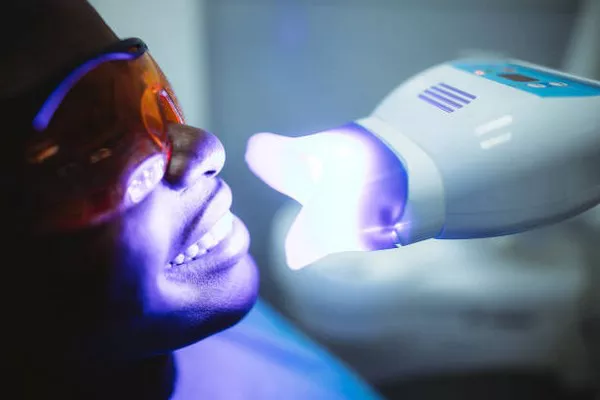Wisdom teeth removal, particularly when impacted, is a common dental procedure that requires careful post-operative care to ensure optimal healing and recovery. Understanding the healing process, factors of wisdom teeth removal, and potential complications can help patients manage expectations and facilitate a smoother recovery journey.
General Healing Timeline
Initial Healing: The first few days following impacted wisdom teeth removal are crucial for initial healing. Patients can expect significant swelling, discomfort, and possibly bruising around the extraction sites. This initial phase is characterized by the body’s natural inflammatory response as it begins to repair the tissues.
Week 1-2: During the first week to two weeks post-surgery, patients typically experience a gradual reduction in swelling and pain. Proper adherence to post-operative care instructions, including prescribed pain medications and ice pack applications, can help manage discomfort effectively.
Weeks 2-4: By weeks two to four, most patients report substantial improvement. Swelling continues to diminish, and pain becomes more manageable. Patients may start to resume a more normal diet as their ability to chew improves. However, it’s essential to remain cautious and avoid hard or crunchy foods that could disturb the healing process.
Full Recovery: Achieving full recovery from impacted wisdom teeth removal can take several months. While the majority of discomfort and swelling resolve within the first few weeks, some patients may experience mild sensitivity or discomfort around the extraction sites for a longer period. Complete bone remodeling and tissue healing are gradual processes that vary from person to person.
Factors Affecting Healing Time
Complexity of the Procedure:The complexity of the wisdom teeth extraction, especially when dealing with impacted teeth, can influence healing time. Surgical procedures that involve cutting through bone or extracting teeth that are not fully erupted may require a longer recovery period.
Individual Variations: Healing times can vary significantly based on individual factors such as age, overall health, and lifestyle habits. Younger patients tend to heal faster than older individuals. General health conditions like diabetes or immune disorders may also impact healing. Smoking can delay healing and increase the risk of complications.
Post-Operative Care: Adherence to post-operative care instructions provided by the dentist or oral surgeon is critical. Proper wound care, including gentle cleaning and avoiding disruptive activities, promotes faster healing and reduces the risk of complications.
See Also: What To Do 24 Hours After Wisdom Teeth Removal
Stages of Healing
Inflammation: Immediately after surgery, inflammation sets in as the body responds to the trauma of the procedure. Swelling, pain, and discomfort are common during this stage.
Repair: In the following days and weeks, the body begins the repair process. New bone forms around the extraction site, and tissues start to heal and knit together.
Remodeling: The final stage of healing involves remodeling of the bone and tissues to achieve a stable and fully healed condition. This stage can take several months and is crucial for ensuring the extracted area integrates seamlessly with the surrounding structures.
Pain Management and Recovery Tips
Pain Relief: Following the dentist’s prescribed pain medications and using ice packs intermittently during the first 48 hours can effectively manage post-operative pain and swelling.
Diet: Initially, sticking to a soft food diet that avoids hot, spicy, or crunchy foods can prevent irritation to the surgical sites. As healing progresses, gradually reintroduce normal foods.
Oral Hygiene: Gentle brushing and flossing around the surgical sites are important to prevent infection and promote healing. Avoid vigorous rinsing or spitting, especially in the first 24 hours.
Rest and Activity: Resting for the first few days post-surgery allows the body to focus on healing. Gradually increasing activity levels as tolerated can help maintain overall well-being without compromising recovery.
Potential Complications
Dry Socket: One of the most common complications after wisdom teeth removal is dry socket, where the blood clot at the extraction site fails to form or becomes dislodged. This can lead to intense pain and delayed healing. Treatment involves cleaning the socket and placing a medicated dressing to promote healing.
Infection: Signs of infection include increasing pain, swelling, redness, or pus around the extraction site. Antibiotics may be prescribed if infection is suspected. Early intervention is crucial to prevent complications.
Delayed Healing: If significant pain, swelling, or bleeding persists beyond the expected recovery period, it’s important to consult with the dentist. Delayed healing could indicate issues such as infection or improper wound care.
Conclusion
Achieving optimal healing following impacted wisdom teeth removal requires patience and diligent adherence to post-operative instructions. While the initial discomfort and swelling are expected, gradual improvement should be noticeable over the first few weeks. By understanding the healing process, recognizing potential complications, and following recommended care guidelines, patients can ensure a smoother recovery and minimize the risk of complications. Dentists play a crucial role in guiding patients through this process, providing support and interventions as needed to promote healing and restore oral health.
You Might Be Interested In






























